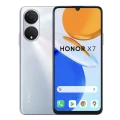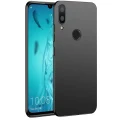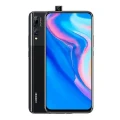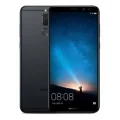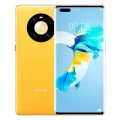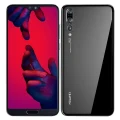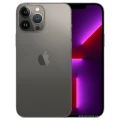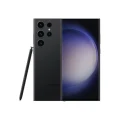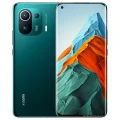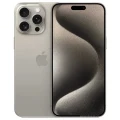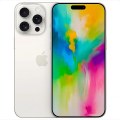- Awesome page
- Latest Mobile
- Smartphones
- Google Pixel 8a
Google Pixel 8a
Google Pixel 8a Price in Bangladesh
The Google Pixel 8a is priced at BDT 55,000 in Bangladesh. It is available in two variants: 128GB/8GB and 256GB/8GB. The device features a 4492mAh battery with fast charging support, runs on Android 14, and is powered by the Google Tensor G3 (4 nm) chipset.
Specifications
General
| Model | Google Pixel 8a |
| Announced | 07-05-2024 |
| Released | 14-05-2024 |
| Status | Available |
| Official price | 55000 |
| Unofficial price | 8GB 128GB ৳55000 |
| Global price | $499/ €549 / £499 |
Design
| Dimensions | 152.1 x 72.7 x 8.9 mm (5.99 x 2.86 x 0.35 in) |
| Weight | 188 g (6.63 oz) |
| Colors |
Obsidian, Porcelain, Bay, Aloe |
Network
| Technology | GSM / HSPA / LTE / 5G |
| 2G Network |
GSM 850 / 900 / 1800 / 1900 |
| 3G Network |
HSDPA 800 / 850 / 900 / 1700(AWS) / 1900 / 2100 |
| 4G Network |
LTE |
| 5G Network |
SA/NSA/Sub6 - International SA/NSA/Sub6/mmWave - USA |
| GPRS <strong>GPRS</strong> (General Packet Radio Service) is a packet oriented mobile data service on the 2G and 3G cellular communication system's global system for mobile communications (GSM), Generally, GPRS is used for the purpose of wireless data transfer, such as sharing pictures and videos or browsing the Internet via a mobile phone connection. | |
| EDGE <strong>EDGE</strong> (Enhanced Data GSM Environment) is a wireless network technology generally considered the next step in the 2G network offers data transfer rates up to four times faster than ordinary GSM networks, Generally, EDGE is used for the purpose of wireless data transfer, such as sharing pictures and videos or browsing the Internet via a mobile phone connection. | |
| Speed | HSPA, LTE (CA), 5G |
Display
| Display Type <strong>Display Technology => </strong> A number of display technologies and types used in mobile phones => TFT (Thin Film Transistor), IPS (In-Place Switching), OLED (Organic Light Emitting Diode), AMOLED (Active-Matrix Organic Light-Emitting Diode), Super AMOLED (an even advanced version of AMOLED), Resistive Touchscreen (Resistive touchscreens contain two layer of conductive material with a very small gap between them which acts as a resistance), Capacitive Touchsceen (Capacitive touchscreen technology consists of a layer of glass coated with a transparent conductor) | OLED, HDR, 120Hz, 2000 nits (peak) |
| Size | 6.1 inches, 90.3 cm2 (~81.6% screen-to-body ratio) |
| Resolution | 1080 x 2400 pixels, 20:9 ratio (~430 ppi density) |
| Features |
Always-on display |
Camera
Main camera
| Camera Setup | Dual |
| Primary <strong>Camera</strong> is able to capture photographs and usually videos, The most important characteristics of a camera are the resolution (measured in megapixels), lens focus type (fixed or automatic), higher megapixel cameras are known to capture higher quality photos, but not always a good measurement of the photos quality. |
64 MP, f/1.9, 26mm (wide), 1/1.73&quot;, 0.8µm, dual pixel PDAF, OIS 13 MP, f/2.2, 120˚ (ultrawide), 1.12µm |
| Features |
Dual-LED flash, Pixel Shift, Auto-HDR, panorama |
| Video | 4K@30/60fps, 1080p@30/60/120/240fps, OIS |
Selfie camera
| Camera Setup | Single |
| Primary <strong>Camera</strong> is able to capture photographs and usually videos, The most important characteristics of a camera are the resolution (measured in megapixels), lens focus type (fixed or automatic), higher megapixel cameras are known to capture higher quality photos, but not always a good measurement of the photos quality. |
13 MP, f/2.2, 20mm (ultrawide), 1.12µm |
| Features |
Auto-HDR, panorama |
| Video | 4K@30fps, 1080p@30fps |
Hardware
| Chipset <strong>Chipset</strong> is a group of integrated circuits designed to perform one or a more dedicated functions, often with real time computing constraints, Popular smartphones are equipped with more advanced embedded chipsets that can do many different tasks depending on their programming. | Google Tensor G3 (4 nm) |
| CPU <strong>CPU</strong> (Central Processing Unit) mostly known as processors, CPU processes instructions in order to carry out certain functions that make your device operate properly. Processors are often described as the brain of computers, smartphones and tablets, Smartphones and tablets rely on processors to carry out their every task, Processors are an incredibly important factor in selecting any type of computing device, including your smartphone. | Nona-core (1x3.0 GHz Cortex-X3 & 4x2.45 GHz Cortex-A715 & 4x2.15 GHz Cortex-A510) |
| GPU <strong>GPU</strong> (Graphics Processing Unit) is a single-chip processor designed to rapidly manipulate and alter memory to accelerate the creation of images in a frame buffer intended for output to a display, This includes things such as lighting effects, object transformations, and 3D motion. | Immortalis-G715s MC10 |
| RAM (Memory) <strong>RAM</strong> (Random Access Memory) is a type of computer memory that can be accessed randomly, any byte of memory can be accessed without touching the preceding bytes that allows information to be stored and accessed quickly from random locations. RAM is the most common type of memory found in computer systems, smartphones, tablets and other electronic devices. | 8 GB |
| Internal Storage <strong>Internal Storage</strong> is a data storage space (flash memory) mostly used in smartphones, tablets and other electronic devices where operating system, apps, music, photos, videos, files and other user data Is stored. | 128/256 GB UFS 3.1 |
| Sensors <strong>Sensors</strong> are electronic components that detects and responds to some type of input from the physical environment. The specific input could be light, heat, motion, moisture, pressure and location, The output is generally a signal that is converted to use in computing systems, a location sensor, such as a GPS receiver is able to detect current location of your electronic device. |
Fingerprint (under display, optical), accelerometer, gyro, proximity, compass, barometer |
Connectivity
| Bluetooth <strong>Bluetooth</strong> is a wireless communications technology for exchanging data between mobile phones, headsets, computers and other network devices over short distances without wires, Bluetooth technology was primarily designed to support simple wireless networking of personal consumer devices. | 5.3, A2DP, LE |
| Infrared <strong>Infrared</strong> connectivity is an old wireless technology used to connect two electronic devices. It uses a beam of infrared light to transmit information and so requires direct line of sight and operates only at close range. | |
| USB | USB Type-C 3.2 |
| GPS <strong>GPS</strong> The Global Positioning System is a satellite-based radio navigation system, GPS permits users to determine their position, velocity and the time 24 hours a day, in all weather, anywhere in the world, In order to locate your position, your device or GPS receiver must have a clear view of the sky. | GPS, GLONASS, GALILEO, BDS, QZSS, NavIC |
| NFC <strong>NFC</strong> (Near field communication) is a set of standards for smartphones and similar devices to establish peer-to-peer radio communications with each other by touching them together or bringing them into proximity, usually no more than a few inches. |
Battery
| Battery Type <strong>Battery Type => </strong> Cell phones run on various kinds of batteries depending on the manufacturer, phone size or shape and features. There are basically four types of cell phone batteries => Lithium Polymer, Lithium Ion, Nickel Metal Hydride and Nickel Cadmium. | Non-Removable Li-Po |
| Capacity <strong>Battery Capacity</strong> is a measure (typically in Amp-hr) of the charge stored by the battery, and is determined by the mass of active material contained in the battery. The battery capacity represents the maximum amount of energy that can be extracted from the battery under certain conditions. | 4492 mAh |
| Charging Charging | Wired, PD3.0 7.5W wireless |
Google Pixel 8a Review: A Midrange Marvel with Premium Features
Google has made a name for itself in the smartphone world with its Pixel range, offering an intersection of innovative technology, clean software, and stellar cameras. The recently launched Google Pixel 8a is no exception. Targeted at users who want cutting-edge features without breaking the bank, the Pixel 8a balances affordability and performance while delivering Google’s renowned software-first experience.
Is the Google Pixel 8a the midrange phone to beat in 2024? Let’s dig into its design, performance, camera capabilities, and more to find out if it’s the right device for you.
Design and Build Quality
The aesthetics of the Pixel 8a continue the design language we’ve come to associate with Google’s devices. The phone boasts an all-new sleek matte finish encased in a recycled polycarbonate shell, ensuring durability while maintaining its lightweight nature. At just 193 grams, the device feels light in hand but sturdy enough to weather everyday usage.
The camera bar remains a distinctive design feature, giving the Pixel 8a a recognizable silhouette. It houses a dual-camera system seamlessly integrated into the back panel. The phone also comes in three stylish colors—Charcoal, Snow, and Sea Glass—so there’s an option to match every personality.
On the front, the slim bezels frame a 6.1-inch screen, giving it a balanced look. The IP67 water and dust resistance rating ensures you’re protected from accidental spills and short encounters with the elements, which are always a plus for durability-conscious consumers.
Bottom Line: The Pixel 8a’s design is modern yet minimal, delivering functionality and style in equal measures.
Display and Performance
The 6.1-inch FHD+ OLED display offers sharp details, vibrant colors, and deep blacks—all hallmark traits of OLED technology. The 90Hz refresh rate ensures smooth scrolling and an excellent viewing experience, particularly when streaming or gaming. Though it’s not the 120Hz standard found on premium flagships, the compromise makes sense for its price point.
Under the hood, the Pixel 8a is powered by the Google Tensor G3 (4 nm) chipset, ensuring top-tier processing power for all your multitasking, gaming, and media consumption needs. Coupled with 8GB RAM, even demanding apps and games run without noticeable stutters.
The phone is available in two storage configurations—128GB and 256GB, which should meet the needs of most users. However, the lack of expandable storage might be a drawback for those who prioritize having more offline file storage.
Bottom Line: The Pixel 8a delivers excellent display quality and performance that easily handle daily tasks and power-user needs without significant compromise.
Camera Capabilities
When it comes to cameras, Google excels, and the Pixel 8a further cements its reputation. The phone features a dual-camera system, including a 64MP primary lens and a 12MP ultra-wide lens. The result? Photos that are vibrant, detailed, and with a dynamic range that’s hard to find in competitors at this price range.
Low-light photography, an area where many midrange devices falter, is spectacular on the Pixel 8a thanks to Google’s AI-driven Night Sight mode. Whether you’re capturing a dimly lit café scene or a moonlit landscape, the phone retains impressive detail and minimal noise.
For video recording, the phone supports 4K at 30/60fps from both the front and rear cameras, ensuring crisp, steady footage even when you’re on the move.
Selfies are equally impressive, with a 13MP front-facing camera that captures natural tones and delivers excellent results for those Instagram-worthy moments.
Bottom Line: The Pixel 8a’s cameras remain top-tier in its segment, making it an excellent choice for photography enthusiasts.
Battery Life and Charging
The Pixel 8a comes equipped with a 4492mAh battery, which provides solid endurance. On a full charge, the phone easily lasts a day with moderate use, including browsing, streaming, and light gaming. For more intense usage, you might find yourself reaching for a charger in the evening.
Thankfully, the phone supports 30W fast charging, allowing you to juice up quickly when you’re running low. However, there’s no wireless charging, a feature you might miss if you’re accustomed to premium devices.
Bottom Line: The Pixel 8a offers reliable battery life with fast charging, though wireless charging could have been a welcome addition.
Software and User Experience
Running on Android 14, the Pixel 8a provides the quintessential stock Android experience Google is known for. The interface is clean, fast, and free of bloatware, which is a refreshing change compared to heavily-skinned alternatives in the market.
Being a Google device, you also get exclusive AI features, such as on-device Google Assistant functions and the Pixel Call Screen feature, making everyday tasks intuitive and seamless. Plus, Google’s promise of 5 years of security updates ensures your phone stays secure and up to date for the foreseeable future.
Bottom Line: The Pixel 8a nails the software experience, combining simplicity with smart AI features to enhance functionality.
Price and Value Proposition
The Google Pixel 8a is priced at BDT 55,000 in Bangladesh, making it a strong contender in the midrange market. With its two variants, 128GB/8GB and 256GB/8GB, buyers have storage options to suit their needs.
When compared to other devices in its price range, like Samsung’s A-series or Xiaomi’s flagship killers, the Pixel 8a stands out with its camera prowess, clean software, and reliable user experience. Its price-to-performance ratio makes it an attractive option for users looking to strike a balance between cost and premium features.
Bottom Line: With its robust feature set, the Pixel 8a is worth every penny for users prioritizing great cameras, clean software, and long-term reliability.
The Final Verdict
The Google Pixel 8a successfully carves out its niche in the competitive midrange smartphone market. With excellent cameras, a smooth display, and Google’s signature Android experience, it’s sure to win over both new buyers and loyal Pixel fans. While minor drawbacks like the lack of wireless charging can be overlooked, the overall value it delivers makes it a standout choice in its category.
For tech enthusiasts, photography lovers, or anyone who wants a device that prioritizes user experience, the Pixel 8a ticks all the right boxes.
Are you tempted to make this your next smartphone? Share your thoughts or questions in the comments below!



























































































